Everyone knows that good beer is made of three ingredients: grain, yeast, and hops. However, there’s a bit more to it than that. Here is everything you need to know about homebrewing ingredients.
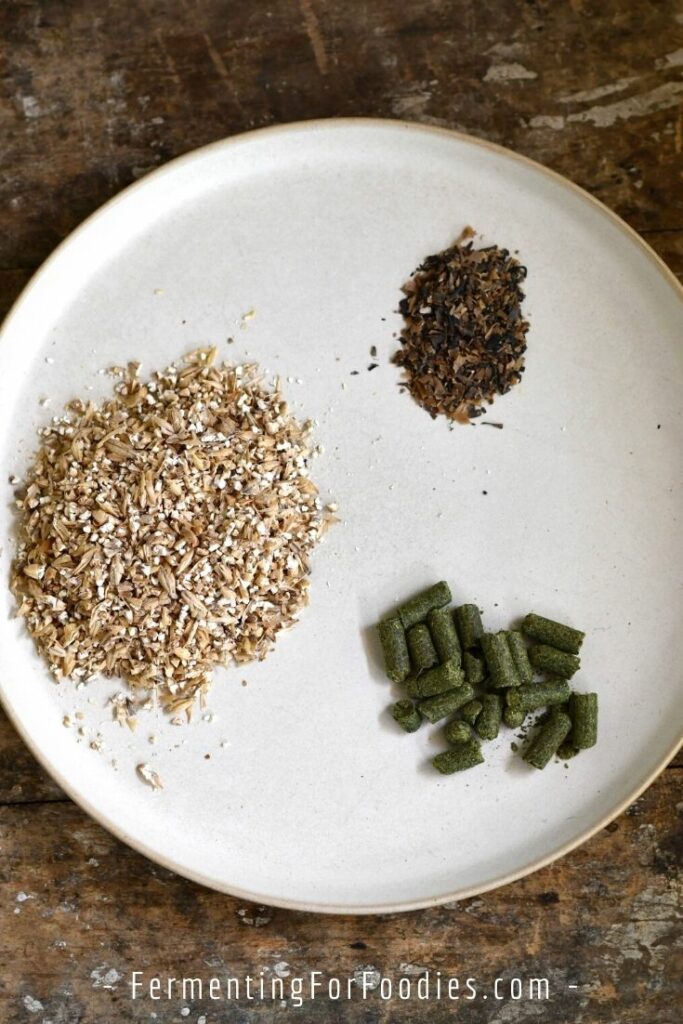
This is part of a series of posts on homebrewing. For more information about the equipment and steps involved with brewing beer, see Homebrewing 101.
1. Malted Grain or Malt Extract
Beer is made when yeast consumes grain sugars. In its raw form, grain is full of complex carbohydrates. In order to convert grain to simple sugars that will feed the yeast, it needs to be malted. There are two ways to get malt for homebrewing: malt extract or malted grains.
Malt extract
Using malt extract skips the whole process of extracting wort from the malted grains. It comes either as dry malt extract, or a liquid malt extract. If you want to use a malt extract, then be sure to follow a recipe that uses the particular kind of malt extract that you bought. They are not easily interchangeable in a recipe.
Malt extracts are easier than starting with malted grain; however, the resulting beer will taste… like… homebrew. It’s just not as good as making homemade wort. However, it can be hard to make enough wort at home to get the concentration of malt required for a strong beer. So using malt extract in combination with malted grain is an easy and delicious solution.
Malted Grain
Beer is generally made from malted barley because barley is a brewing supergrain.
- It naturally has a high starch content, along with the enzymes needed to convert starch into sugar.
- Barley has the proteins required to feed the yeast.
- Barley husks are perfect for filtering the wort.
Beer can also be brewed with other grains like wheat, rye, oats, corn, and rice. They just aren’t a ideal and the final beer will require more filtering.
For anyone interested in a deep dive into homebrewing ingredients, here are the steps involved with malting grain:
- The grain is sprouted until it has a rootlet that is equal to the size of the original grain.
- At this point, the grain has activated the enzymes required to convert the storage starches into simple sugars.
- The grains are then heated to prevent them from growing any further.
- Finally, the grains are fully dried and toasted for flavor.
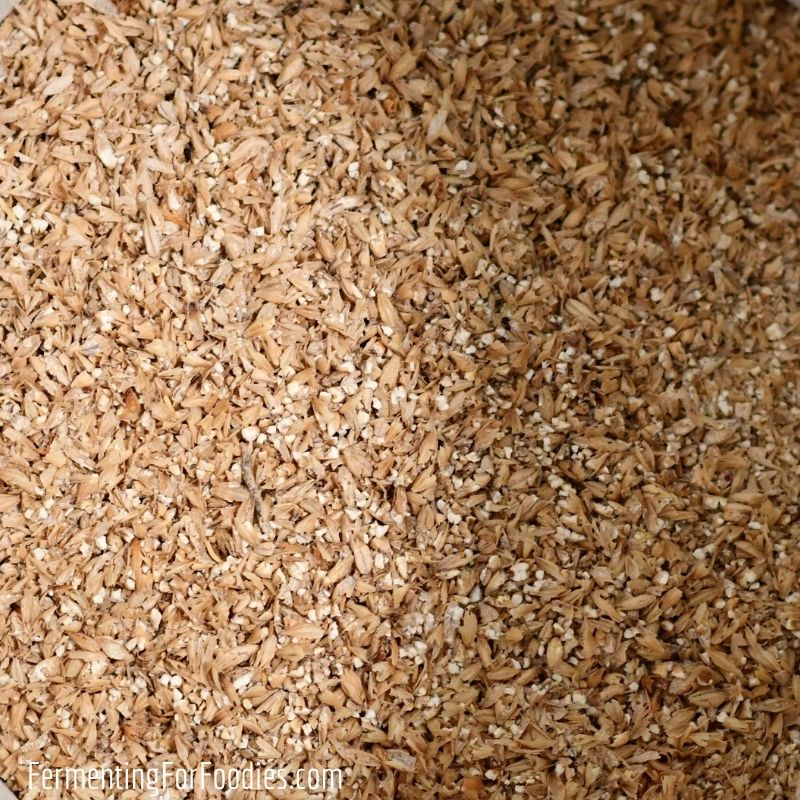
2. Yeast
Traditionally all alcohol was made from wild yeasts. However, this doesn’t always result in a tasty brew. It really depends on regional variations in wild yeasts and your ability to control them.
Over time, specific strains of yeast have been cultivated to make beer, wine, etc. Each of the strains has been selected to ferment at particular temperatures and will influence the flavor of your beer. So it’s best to use the yeasts recommended in the recipe, and follow the instructions on the yeast package for temperature and fermentation time.
You can buy yeasts online or at your local homebrewing shop.
3. Hops
Hops are the cone-shaped flowers of a hop vine. They are used for flavor and as a preservative. And they can be added at different times throughout the brewing process.
- Adding hops to the boil will add bitterness to the beer.
- Added to the secondary ferment will give the beer that distinctly “hoppy” flavor.
There are a number of different varieties of hops, and each add their own flavor to the beer. You can find them in pellet form online or at your local brew shop.
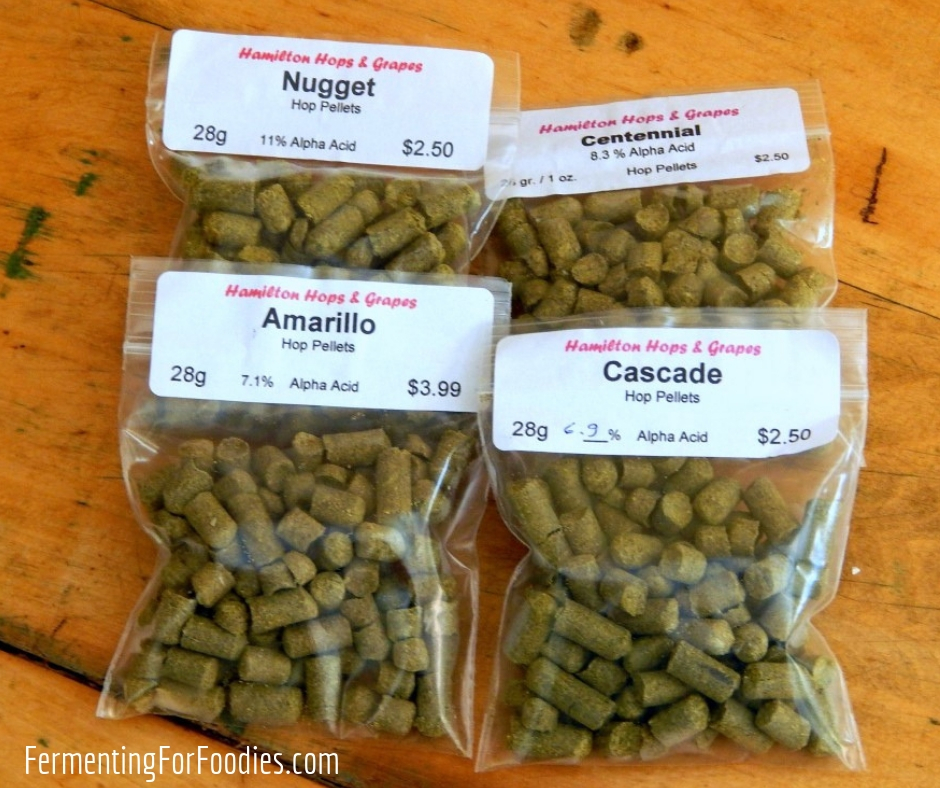
4. Other Ingredients
Water
Water is a BIG part of beer. You don’t need distilled water, but you do want to avoid using bad-tasting tap water. Here’s a post on water, if you want to learn more about filtering water for brewing (and other types of fermentation).
Irish Moss
Irish moss is a seaweed that you can buy either in powdered form or as dried leaves. It is added in the last 20 minutes of boiling to clarify the beer. It causes the proteins from the wort to clump together and fall to the bottom of the boiling pot so they can be filtered out.
Sugars
Sugars are added to beer for two main reasons:
- To raise the alcohol level of the beer without using more wort. Wort gives the beer the sugar it needs to make alcohol, adding more wort would make a strong dark beer. If you want a light beer with higher alcohol content, then you need to add sugar.
- Usually sugar is added right before bottling to feed the yeast so that the beer is nicely carbonated.
The type of sugar will affect the flavor of the beer. Honey, molasses, and maple syrup all have distinct flavors. I typically use dextrose because it’s cheap, doesn’t affect the flavor of the beer and is available at my local homebrew shop.
5. Flavors
The best part about homebrewing is that you can play with flavor! Flavor can be added at two different times.
Added to the boil
Flavorings can be added during the boil of the wort.
- This means that they will be sterilized during the process, so there is little risk that they will contaminate the beer with unwanted yeasts and bacteria.
- It isn’t recommended for fresh fruit and herbs as the boiling tends to destroy the flavors.
- Boiling is best for things like spices, coffee, dried fruit, cocoa nibs, and vanilla beans.
Added during secondary fermentation
You can also add flavors when you transfer your beer for secondary fermentation.
- This is better for bringing out flavors in fresh fruit, berries and herbs.
- It’s important to wash any flavors added during the secondary fermentation really well to avoid contamination.
- Usually, the alcohol levels will be high enough that the wild yeast and bacteria on the fruit won’t be able to contaminate the beer, but it is always a risk, so I recommend using smaller carboys (5 gallon) when you’re playing with flavor.
I hope you enjoyed this overview of the homebrewing ingredients! Feel free to leave any questions you might have in the comments section, and I’ll do my best to answer them.
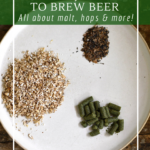
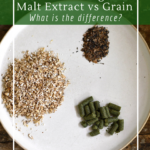
Leave a Reply